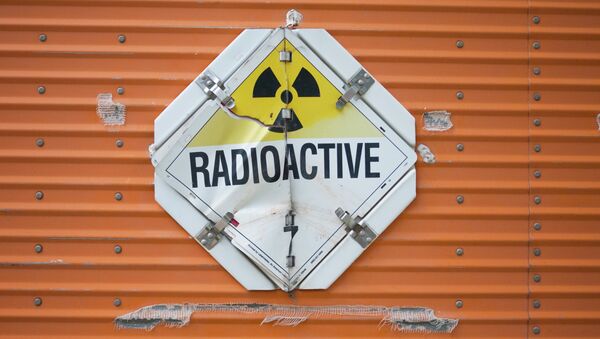Elston "Swede" Stephenson alleged that three five-gallon buckets of uranium sat in a museum collections building at the park from 2000 to 2018, according to a report posted Monday by AZcentral.
The article features Stephenson’s 45-slide presentation with his findings. He believes that adults may have been exposed to 140 times the radiation levels deemed safe by the Nuclear Regulatory Commission (NRC), while children who might have been exposed to the uranium potentially experienced 1,400 times the safe level.
READ MORE: Military Starting Trials of Russian Engineering Vehicle Impervious to Radiation
The room where the found buckets were stored is located next to the taxidermy exhibition, which was frequently visited by tourists. Stephenson said any radiation contamination that reached the exhibits may have caused harmful exposure to children within seconds and adults within a half-minute.
The report suggested that the radiation level next to the uranium was measured at 13.9 milliroentgen per hour – seven times the safety limit recommended by the NRC. The same report also found that the radiation levels dropped to zero beyond a five-foot radius of the buckets.
On February 11, Stephenson alerted acting Interior Secretary David Bernhardt and Deputy Inspector General Mary Kendall to the problem in an email, noting that "respectfully, it was not only immoral not to let Our People know, but I could no longer risk my (health and safety) certification by letting this go any longer."
Emily Davis, a spokesperson for Grand Canyon National Park, said that Stephenson’s claim would be investigated by the Occupational Safety and Health Administration and the Arizona Department of Health Services, adding that there is “no current risk to the park employees or public” adding that there is no danger since the rocks were removed.
According to Stephenson, the buckets of ore were discovered in March 2018 by the teenage son of a park employee, described as a “Geiger counter enthusiast”, who noted that the readings on his counter were high in the basement storage room at Museum Collections Building (2C), located in Grand Canyon Village.
Stephenson claims he was alerted to the problem during a safety audit. Calling it “bad mojo,” he requested help from National Parks specialists, who ultimately removed the uranium in June. However, the National Parks Service management refused to issue a warning to those who might suffer health consequences due to radiation exposure, after which Stephenson said he decided to go public. It still remains unclear, however, whether anyone visiting Grand Canyon Village between 2000 and 2018 was exposed to dangerous levels from the buckets of ore, which could lead to a heightened risk of developing cancer, especially if children were exposed.



